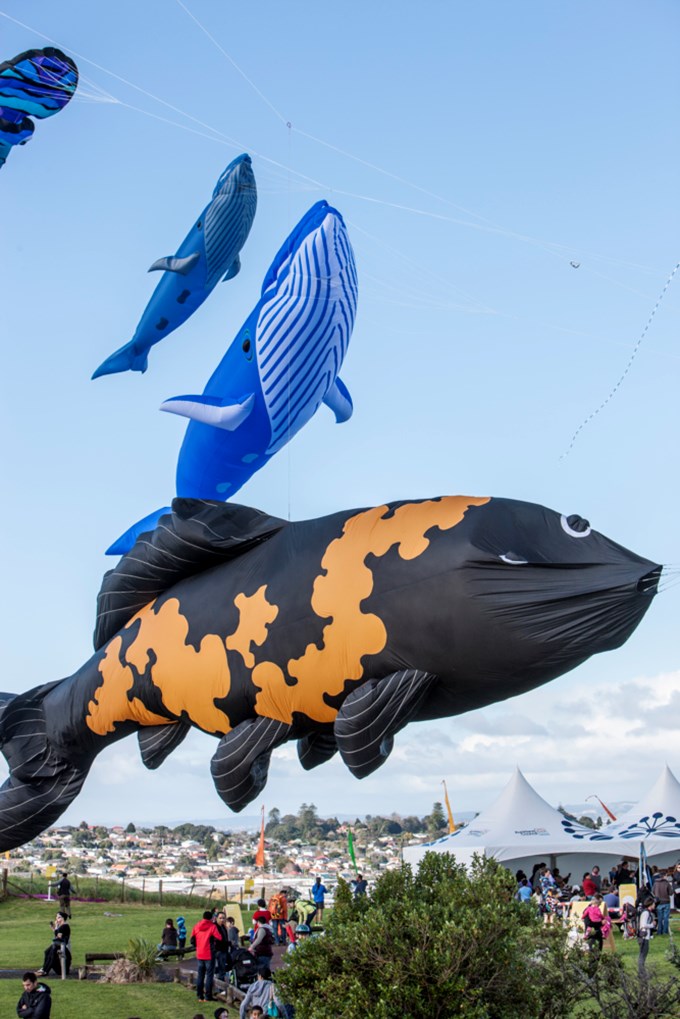Kites have always played an important role in Māori culture, particularly during the winter season when they were flown to signify the start of Matariki, the Māori New Year.
The Māori kite is called manu tukutuku or manu aute – manu translates as either kite or bird. Another word for kites is pākau, meaning the bird wing.
Māori flew kites for recreation, but also to communicate, measure the likelihood of a successful enemy attack, or to find offenders. They were also used as a means to communicate with those who had passed on, connecting heaven and earth.
Traditionally, mānuka (tea tree) and kareao (supplejack) were often used to make the larger kite frames, whereas the stems of toetoe, kākāka (bracken) and rush were used to make kites for children.
Aute (cloth made from the bark of the paper mulberry tree) raupō (bulrush) or ūpoko tangata (cutty grass) leaves were used to cover large kites. Muka (flax leaf fibre) was twisted to make the flying lines (aho tukutuku). The kites were intricately decorated with a range of materials, including shells, feathers, horns, coloured shapes and carved faces.
Everyone is welcome to join in this Māori tradition at the three Manu Aute Kite Day events taking place on Sunday 8 July as part of Matariki Festival 2018. All are free entry, so bring the whānau and have a go at making and flying your own kite, or watch the professionals as they skillfully manoeuvre giant kites in the sky.
Head to the Matariki Festival website to find a Manu Aute Kite Day event near you.
Manu Aute Kite Day on Pukewiwi (Mount Roskill) is an annual event supported by the Puketāpapa Local Board. Come along to enjoy stunning views from the top of the maunga and have a go sending your kites up towards the heavens.
Matariki Festival is proudly hosted by Auckland Council in partnership with iwi manaaki Te Kawerau a Maki with the help of Te Wānanga o Aotearoa and Vector Lights (principal partners), AMI Insurance (supporting partner), SKYCITY, Huawei P20 and Te Matatini Kapa Haka Aotearoa (supporters) and Mai FM (media partner).
Source - Bob Maysmor, 'Kites and manu tukutuku', Te Ara - the Encyclopedia of New Zealand, TeAra.govt.nz/en/kites-and-manu-tukutuku


